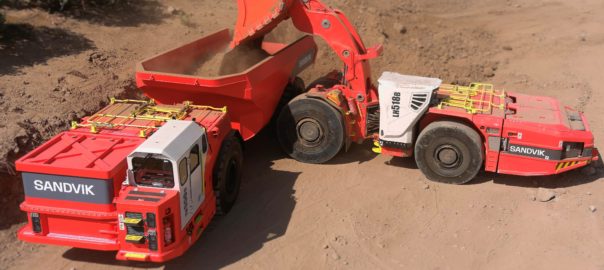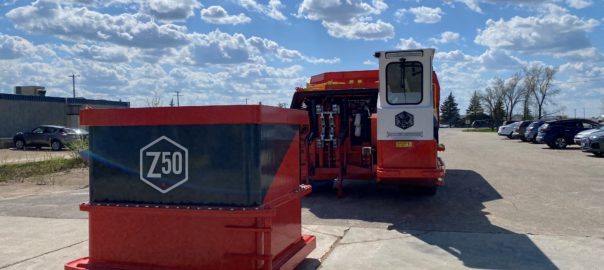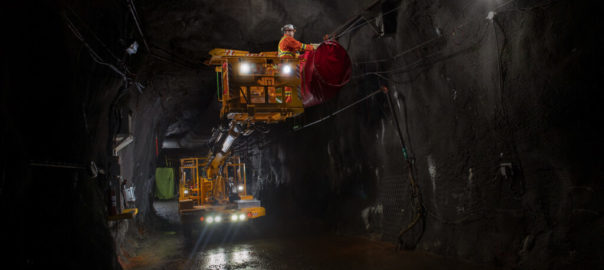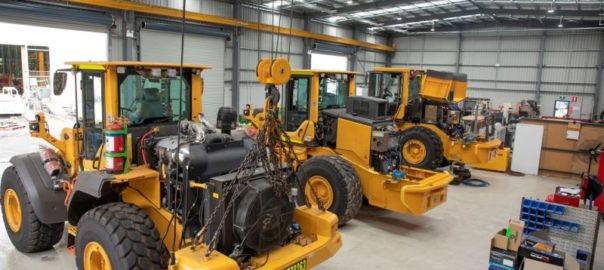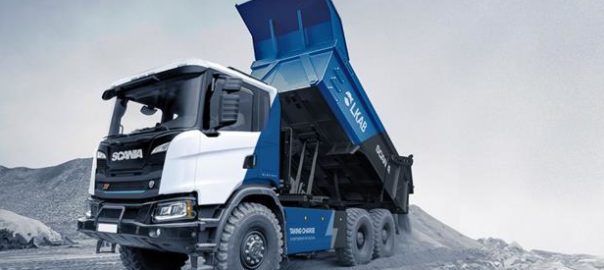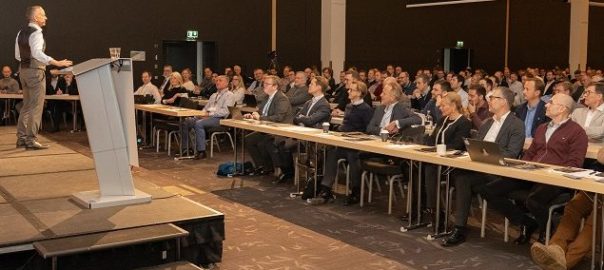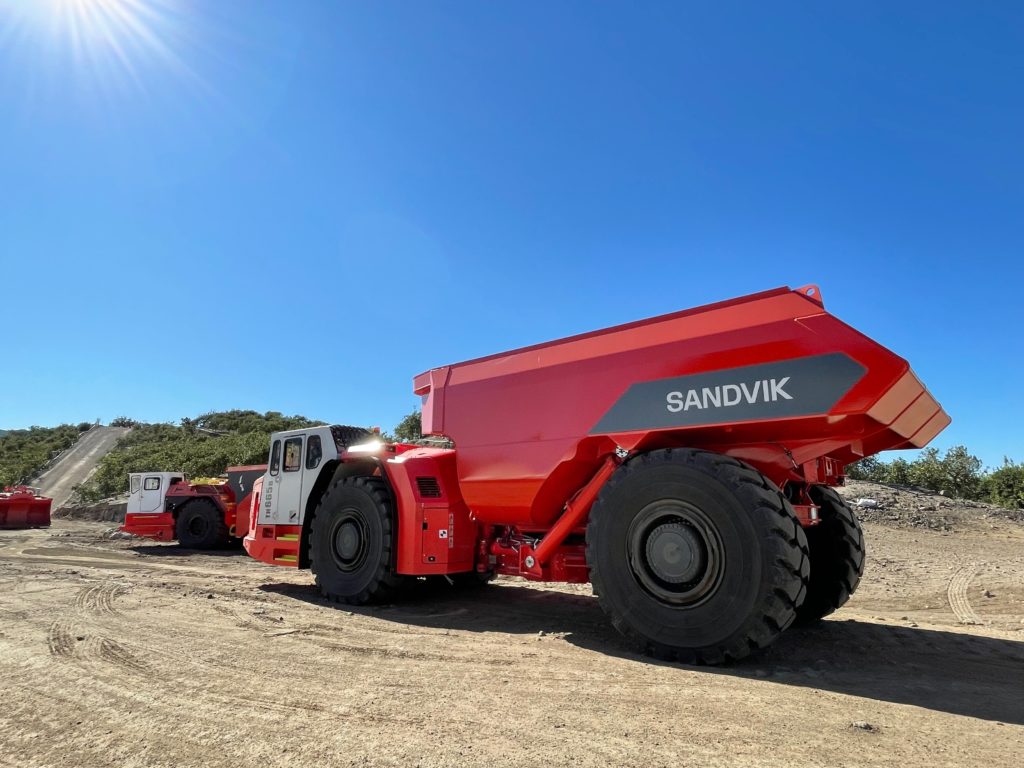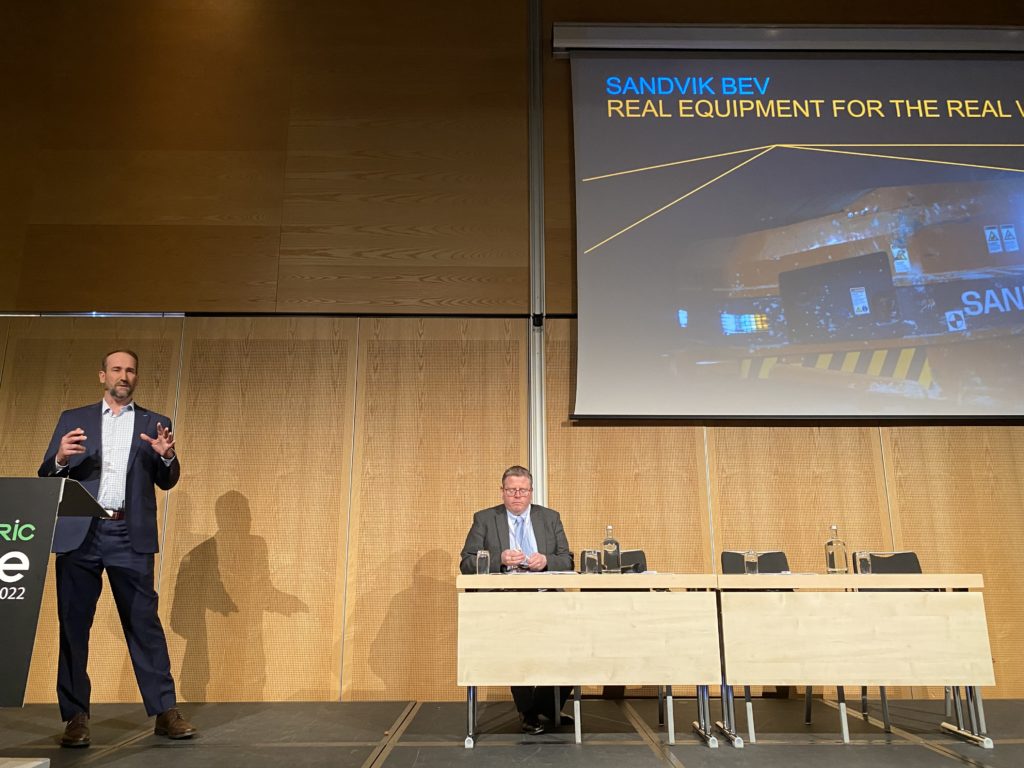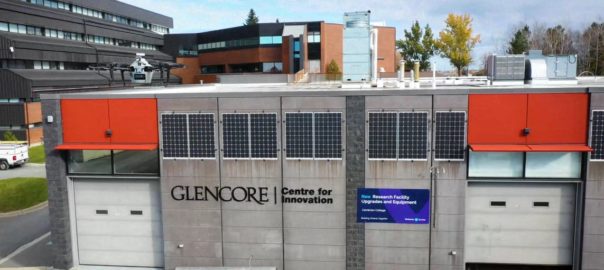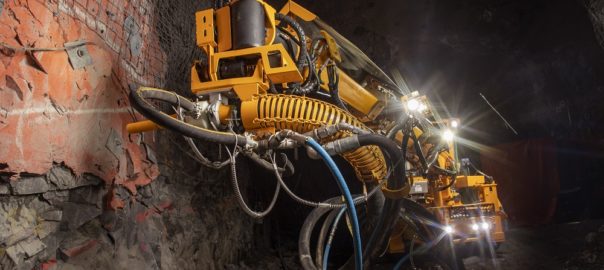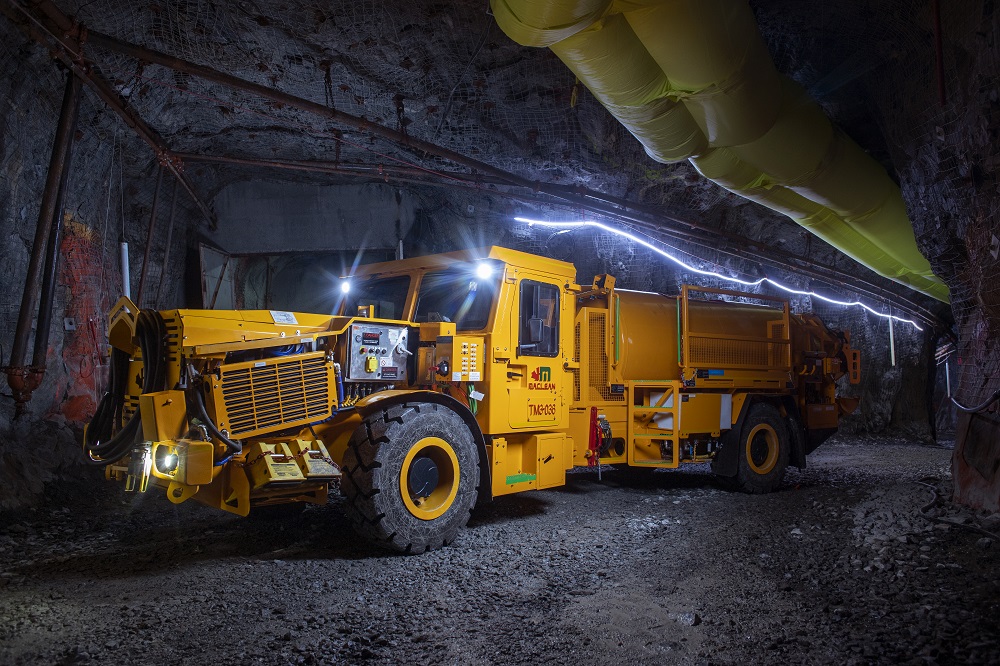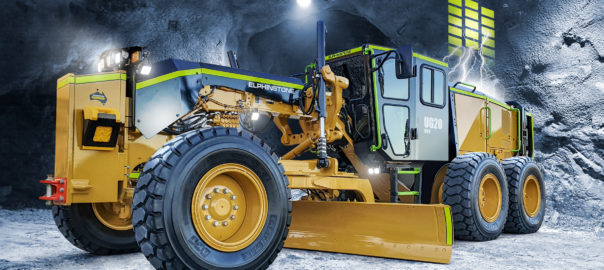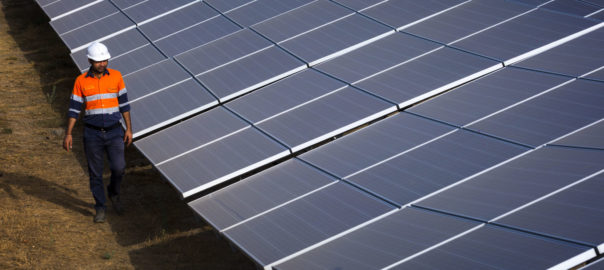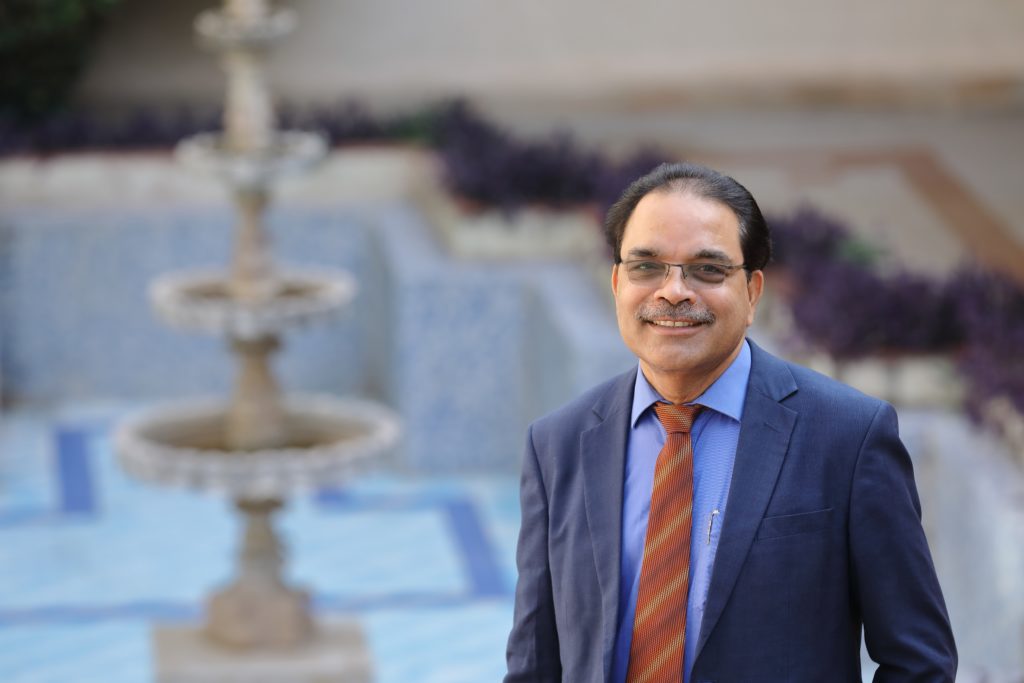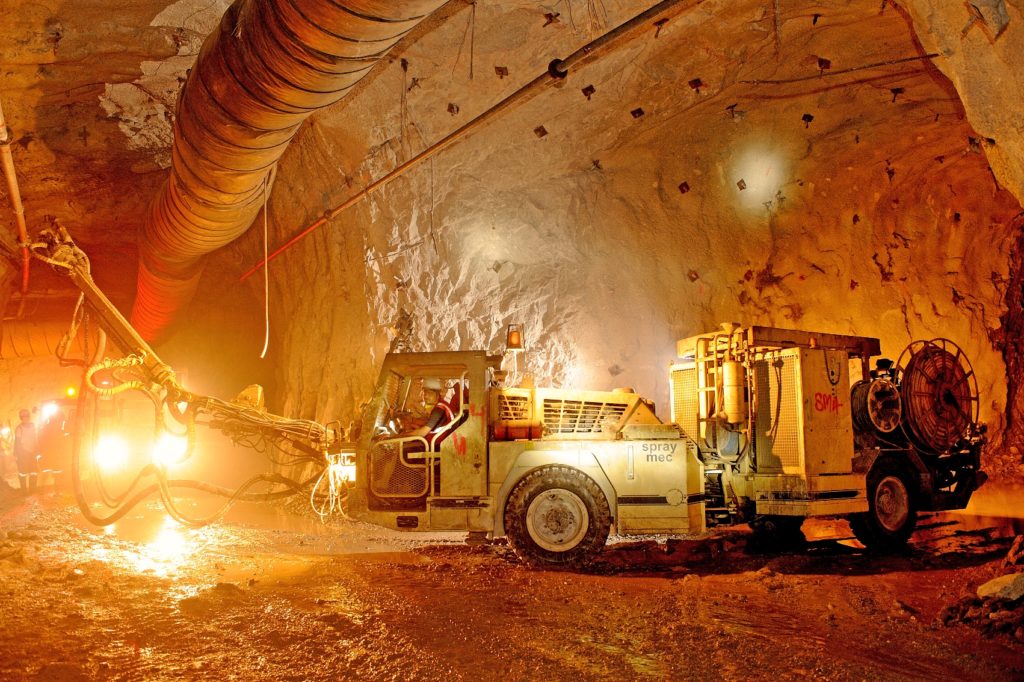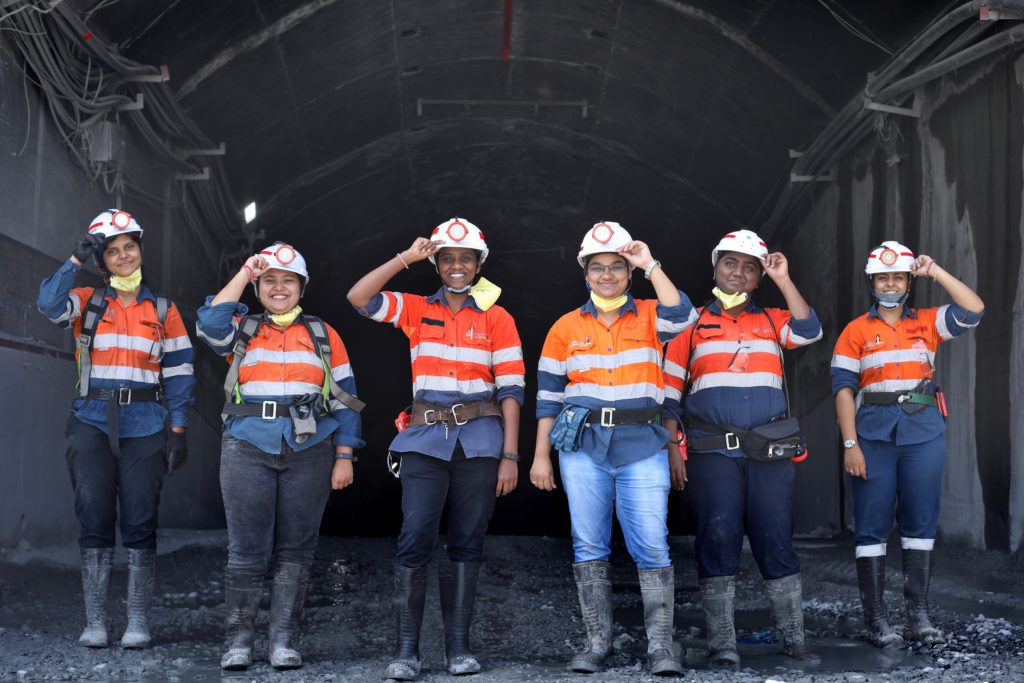Foran Mining has selected Sandvik Mining and Rock Solutions to supply a fleet of 20 battery-electric vehicles (BEVs), including trucks, loaders and drills, for its McIlvenna Bay project in Saskatchewan, Canada.
Set to be one of the world’s first carbon-neutral copper development projects, McIlvenna Bay will be powered by clean hydroelectric power and designed to take advantage of Sandvik’s latest technological advances in sustainable mining, the OEM says.
Sandvik’s biggest BEV fleet to date will include seven Sandvik 18-t-payload LH518B loaders (pictured dumping into a TH550B), six Sandvik 50-t-payload TH550B trucks, four Sandvik DD422iE jumbo drill rigs, two Sandvik DL422iE longhole drills and one Sandvik DS412iE mechanical bolter. Delivery of the equipment is scheduled to begin next year and continue into 2025, Sandvik says.
Sandvik will also provide on-site service support and Battery as a Service by Sandvik at the underground copper-zinc mining project located in east-central Saskatchewan.
Jakob Rutqvist, VP Strategy and Commercial for Sandvik Mining and Rock Solutions’ Battery and Hybrid Electric Vehicles (BHEV) Business Unit, said: “This record contract is the culmination of a year-long collaborative effort between Foran Mining and Sandvik and demonstrates a shared vision that electrification will drive the future of sustainable mining. BEVs have enormous potential to reduce a mining operation’s carbon footprint, and Canada continues to be the epicentre for mining electrification and a blueprint for what to expect in other major mining regions very soon.”
Copper and zinc are critical metals for the transition to a low-carbon future as essential elements of electrical grids, solar panels, wind turbines and batteries. The McIlvenna Bay project intends to supply those minerals in a way that will not only be carbon neutral but ultimately have a net positive impact on the climate, according to Sandvik.
Dave Bernier, Chief Operating Officer of Foran Mining, said: “This is a very exciting period for Foran as we continue to execute on our initiatives to permit, construct and operate McIlvenna Bay. Sandvik is a global leader in industrial battery technology and we look forward to working together on our project. Utilising battery-electric equipment with semi- and fully-autonomous capabilities can help us achieve carbon neutral targets and provide a safer working environment, which is part of our Net Positive Business strategy as we look to deliver critical metals essential for global decarbonisation in a responsible and socially-empowering way.”
Foran Mining conducted a thorough analysis during its 2020 prefeasibility study to determine the investment case for BEVs compared with diesel. The company determined that BEVs would deliver better financial results at McIlvenna Bay when considering the savings generated through lower ventilation capital and operating costs.
Stefan Widing, President and CEO of Sandvik, said: “I am very pleased that Foran Mining has chosen Sandvik to deliver our leading battery-electric solutions for the pioneering McIlvenna Bay project. We see very strong momentum for our mining electrification offering, which offers great potential in driving more sustainable mining, helping customers to boost productivity, reduce greenhouse gas emissions and improve workers’ health.”
A dedicated on-site project team will be jointly working with the mine’s operations team to ensure the products and services in the delivery scope support the alliance on Foran’s journey towards more productive, efficient and sustainable mining, Sandvik said.
“Battery as a Service by Sandvik will enable McIlvenna Bay to get the most out of its battery-electric equipment by relying on unrivaled expertise to manage the capacity and health of batteries and chargers throughout their long lives,” it added.







